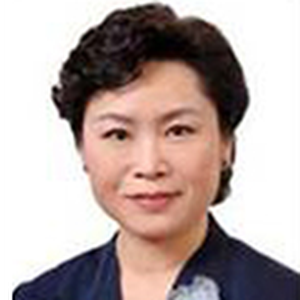Event Details
The Pyramid Principle explains how to think creatively, negotiate lucidly, and express ideas clearly. It will help you define complex problems and establish the objectives; assess your ideas and recognize their importance; structure your ideas into a coherent and lucid argument as well as effectively empower your argument.
The course is designed to fundamentally change your communication process to be more effective, provide a clear structure for written reports, and build audience satisfaction through presentation skills. The course covers all types of persuasive communication.
McKinsey’s classical training textbook for three decades, Pyramid Principles is the success criteria highly recommended by top corporations worldwide. It has also been introduced into renowned colleges including Harvard Business School, Stanford Graduate School of Business and London Business School, etc.
Course Benefits:
- Enhance logicality, coherence in communications; develop clear thinking and quick expression; improve influence, charisma and appeal
- Understand your leaders’ intentions and concerns so that you can design structures specifically and organize materials scientifically
- Analyze and elaborate complex problems by using left brain, right brain and the whole brain
- Learn 28 expression templates that help shorten the length of sentences and the time spent in preparation as well as enhance logical organization in training, speech and other expressions
Target Audience
People from all walks of life who need to write complex reports, analytical essays, memorandums or design ppts.
Course Outline
Day 1
ⅠHighlight the Focal Points; Develop A Clear Logic Pyramid Principle
1. Highlight the focal points & Develop a clear thinking method
- Highlight the key point and cater to the audience’s pleasure
- Figure out the audience psychology and understand the leaders’ intentions
- Cater to the audience’s quest and response correspondingly
- Importance before subordination; entirety before details
- Summary goes before details; argument before evidence
- Conclusion goes before reason; Result before process
- Conclusion goes first
- Top-down Process
- Classification and categorization
- Progressive logic
- 28 writing expression templates of five categories: email, lecture notes, project evaluation, work report, promotion application, marketing plans, analysis reports, feasibility reports, investment and research reports, training plans and course outline, etc.
- Organizing the structure of lectures
- Designing course outlines
Teaching Methods:
Explanation; video; case study; scene simulation; practice; role play; comment and coaching
II The Longitudinal: Top-Down Expression with Top-Down Thinking
1. TOPS Principle
- A simple and clear target
- Strong arguments and well-supported evidence
- Q&A conversations, answering all the questions from the audience
- A rigorous logic and a careful thinking.
- Summary refining, organize material from bottom to top
- Listing key points
- Figuring out relationships
- Coming to a conclusion
- Provocative language and eye-catching titles
- Summarizing the key points and extracting the essence
- Clear, simple, numbers
- Subject-predicate, natural word order, slogan-like and parallel structured sentences
- Define, analyze and solve the problem
- Position - Options - Proposal
Teaching Methods:
Explanation; case study; film; brainstorming; practice; comment and coaching
Day 2
III Horizontal: Deduction and Induction MECE STAR
1. The deductive reasoning
- Linear reasoning
- Major premise - minor premise - conclusion
- Define problems - forecast effect - analyze reason – figure out solutions
- Time sequence
- Space order
- Importance order
- Independent and non-overlapping
- Exhausting all information without any omission
- STAR story structure (background—mission—action—result—experience)
- Define and analyze problem; countermeasure first
Teaching Methods:
Explanation; Case Study; Practice; Comment and coaching
IV Four Elements of Opening with Demonstration and Diagrams
1. Four elements of opening/ forewords
- Setting - conflict - question - answer
- PPT logical structure design
- Amplify information Strengthen the contrast
- Stimulate the audience
- Five kinds of basic chart form
- Selecting correct diagrams according to the topic, audience, goal and information; avoiding low-level mistakes.
- Amplifying the information and strengthening comparison
- Stimulating and provocative
- Training Opening: Maintaining Audience Interests
- Conference Opening: Building up a friendly relationship with the audience; establishing authority and credibility
Teaching Methods:
Explanation; Video; Practice; Comment and coaching; Templates as a gift
Ⅴ Whole Brain Thinking and Problem-solving with High Efficiency
- Seven steps of problem-solving
- Double-funnel model
Special Registration Information:
You must register in advance. Walk-ins will not be accepted. Attendees need to pay by Nov. 3, 2016. Limited spots are available and attendance is given on a first-come, first-served basis.
Cancellation Policy:
If you cannot attend a training for which you have registered, please cancel your registration no later than five business day prior to the training. If you fail to notify AmCham China of your cancellation in a timely fashion, you will be charged for training costs. To cancel you can: 1) email training@amchamchina.org, or 2) cancel online if you registered for the training through the website. Your cooperation in this matter supports AmCham China in maintaining the quality of its trainings and is appreciated by your fellow members and the organization.



